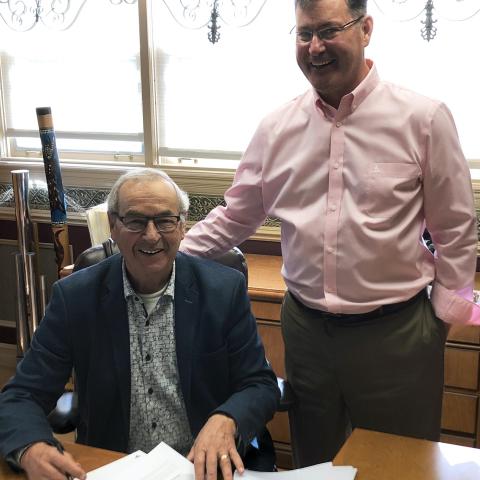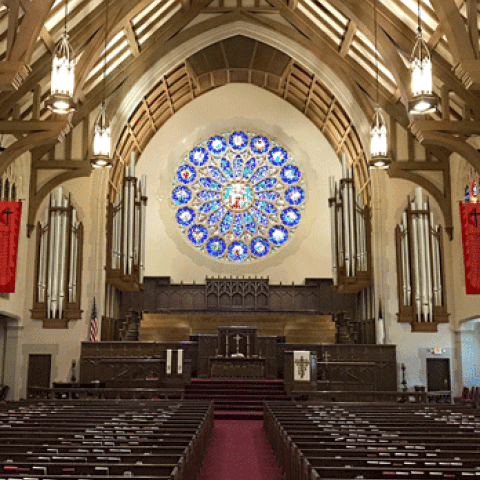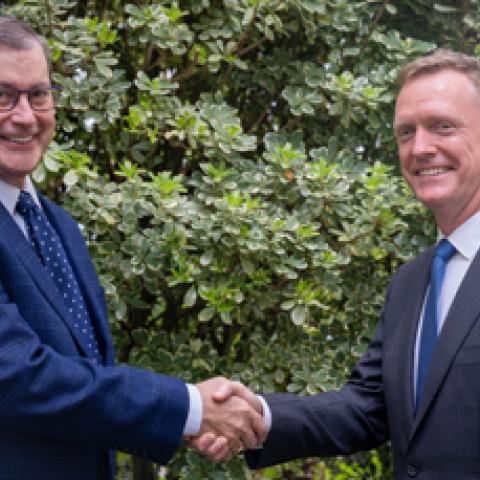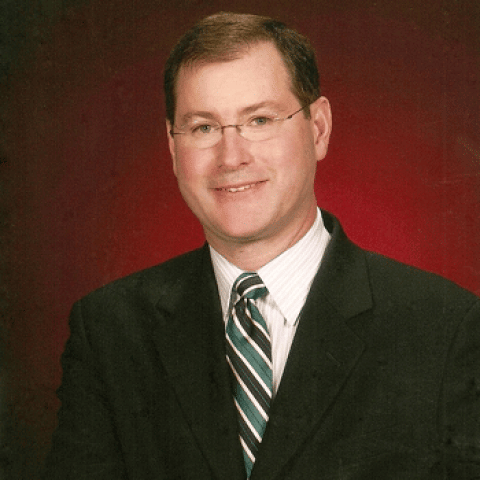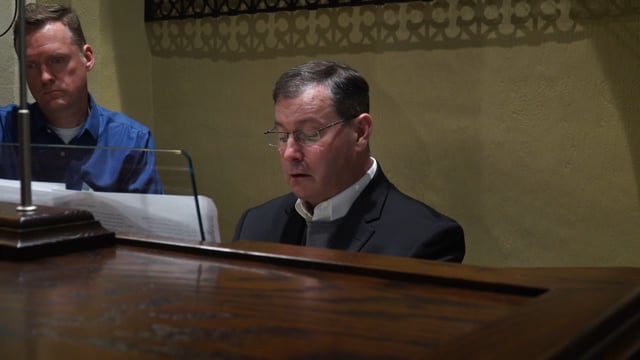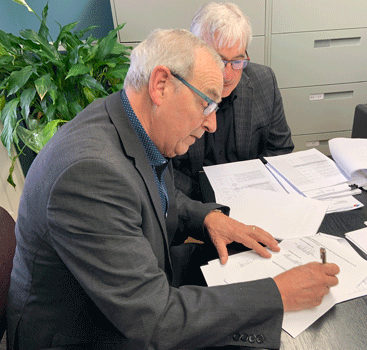
Létourneau Pipe Organs is pleased to announce a new chapter in the company’s management after forty years of continuous operation. The company’s founder, Mr. Fernand Létourneau, has named Dr. Dudley Oakes to assume the role of President and Owner, effective November 5, 2019. Létourneau’s management team will otherwise remain as before and Mr. Létourneau will remain involved in the company’s daily operation to ensure a smooth and orderly transition.
Létourneau Pipe Organs is recognized name globally, having designed and built 132 Létourneau pipe organs for clients in Canada, England, Austria, Australia, New Zealand, and across the United States. Létourneau organs are known for the quality of their construction, the sensitivity and responsiveness of their key actions, and the company’s characteristically clean voicing. Some of the company’s most notable projects to date include instruments for Pembroke College at the University of Oxford (Oxford, England), St. Andrew’s Anglican Cathedral (Sydney, Australia), St. Mary’s Catholic Cathedral (Sydney, Australia), the Chapel of St. Peter ad Vincula at H. M. Tower of London (London, England), First Presbyterian Church (Greensboro, North Carolina), the Francis Winspear Centre for Music (Edmonton, Alberta), the Episcopal Church of St. John the Divine (Houston, Texas), and the Catholic Cathedral of Christ the Light (Oakland, California). Work continues in the Létourneau shops on new pipe organs for First United Methodist Church (Lubbock, Texas), Michigan State University (East Lansing, Michigan), and Market Square Presbyterian Church (Harrisburg, Pennsylvania).
Fernand Létourneau began working in the pipe organ industry as an apprentice voicer for Casavant Frères in February of 1965. He continued there for a period of 14 years, working under the tonal direction of Lawrence Phelps, then Gerhard Brunzema, and served as the company’s head voicer for the last four of those years. Brunzema, in particular, encouraged a 1978 study trip to Europe to see historic voicing techniques firsthand. Mr. Létourneau launched his own company soon after, where he has subsequently worked tirelessly to build Létourneau Pipe Organs into one of the most respected organbuilding enterprises in the world. Among his many achievements, Mr. Létourneau served as co-president of the 2010 joint convention of the American Institute for Organbuilders and the International Society of Organbuilders held in Montréal. He also was also the recipient of the Royal Canadian College of Organists’ Prize of Excellence in 2016.
The first Létourneau organ was built in the Létourneau family home in Ste-Rosalie, Québec and was installed at the Conservatoire de musique in Gatineau, Québec. Contracts soon followed for pipe organs in Canada, Australia and Austria, and the company moved into its present workshop in 1983, taking over a redundant water treatment facility in St-Hyacinthe, Québec.
Dr. Dudley Oakes has been with Létourneau since 1987 at the core of the company’s operations in the United States. Building on a bachelor’s degree from the University of Richmond, Dr. Oakes has a master’s degree and a Doctorate in Organ Performance from the University of Michigan. An acclaimed performer, Oakes has concertized widely in North America and Europe with an emphasis on French and German repertoire from the Romantic era. His knowledge of organ repertoire and performance practice will continue to inform the company’s work.
In the words of Dr. Oakes, “Fernand Létourneau’s contribution to modern organ building in North America is indisputable and he can proudly point to a legacy of beautiful instruments, appreciative clients, and his stellar team. It is a privilege to see this exceptional company into its next forty years.”
For information: http://letourneauorgans.com/en/index.php

